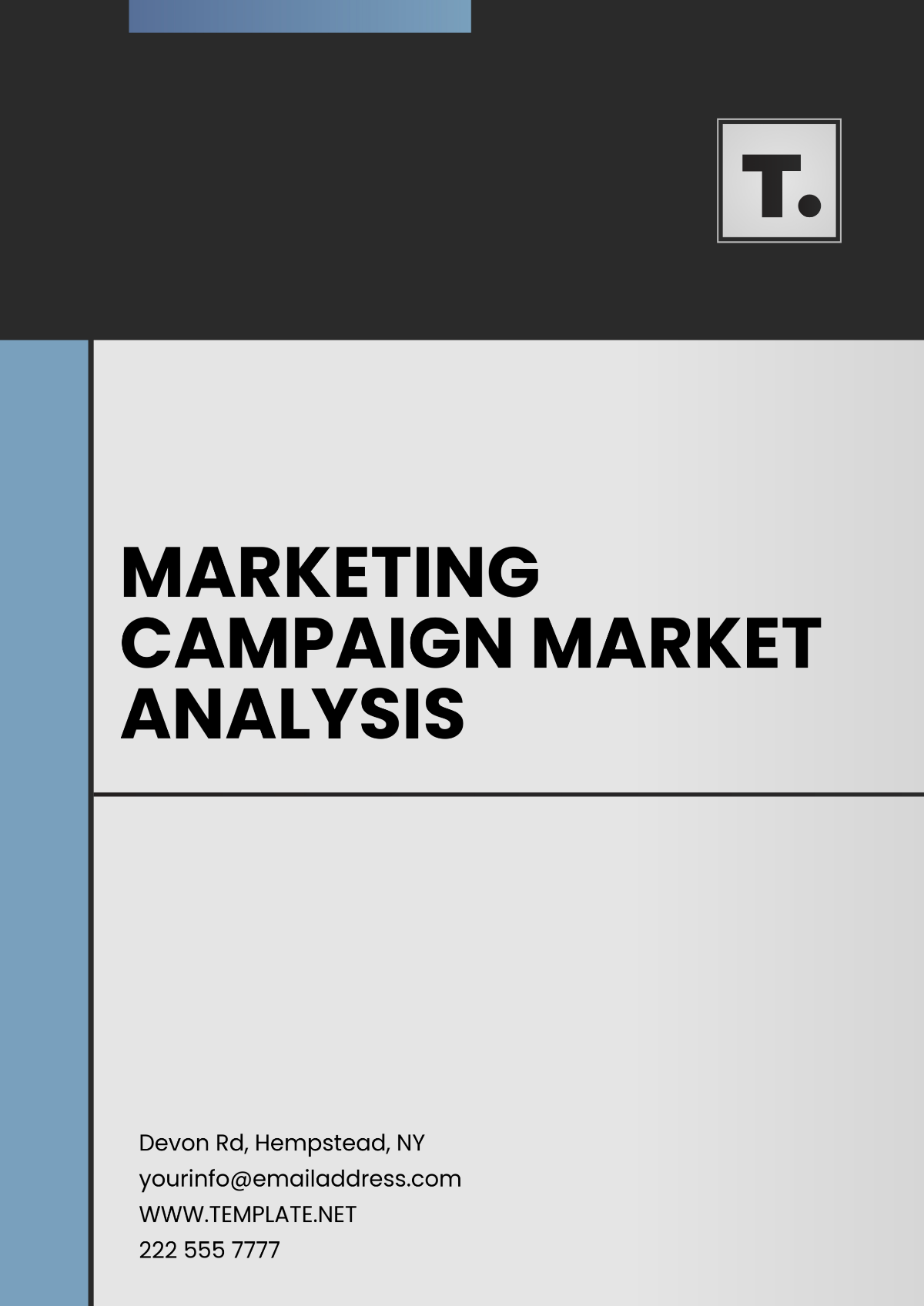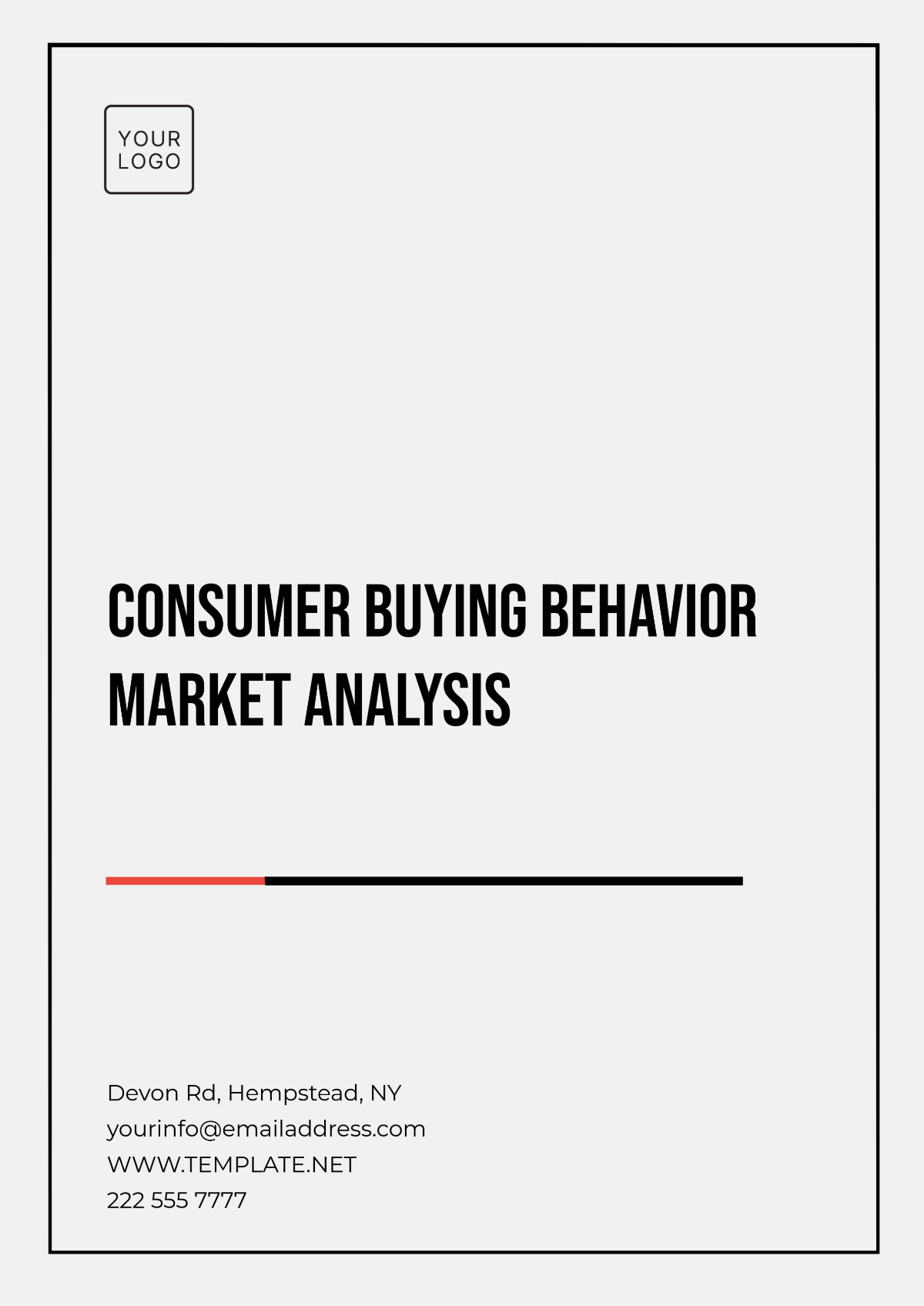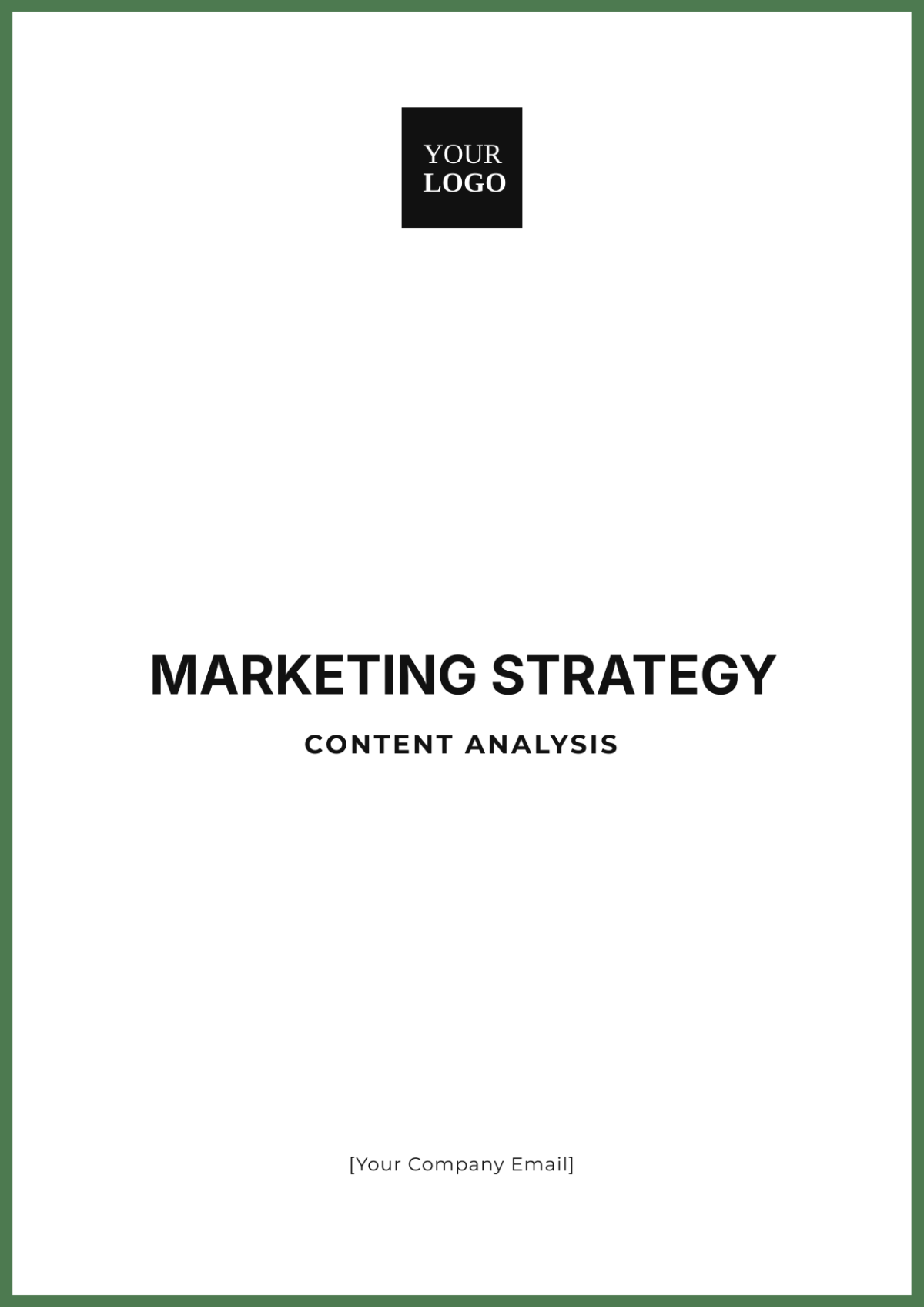Email Marketing Analysis of Subscriber Behavior
Executive Summary
The Email Marketing Analysis report is an in-depth exploration of the year-long email marketing campaign undertaken by [Your Company Name]. The primary objectives of this campaign were to engage the company's subscribers, promote its products, and drive sales. The report uncovers a range of significant findings, providing a comprehensive view of subscriber behavior, campaign performance, and recommendations for future enhancements.
The campaign's results were noteworthy, with an average open rate of 20% and a click-through rate of 5%. Moreover, a 2% conversion rate indicated that the email marketing efforts successfully translated into sales. A closer look at the demographics revealed that subscribers between the ages of 25 and 34 were the most actively engaged. Furthermore, a careful analysis of dispatch timing highlighted that Tuesdays and Thursdays were the optimal days for sending emails, increasing the likelihood of engagement. An interesting A/B testing revelation showed that personalization in email subject lines played a pivotal role in achieving a significantly higher open rate. Impressively, the campaign's revenue attribution to email marketing reached an impressive $500,000. Subscribers also played a crucial role in shaping the campaign, providing feedback on content and frequency, allowing for a more customer-centric approach in the future.
Recommendations for Improvement
In pursuit of enhanced performance, several recommendations have been outlined:
Implement personalization in email subject lines to boost open rates.
Refine subscriber segmentation based on behavior, tailoring content to their preferences.
Maintain vigilant monitoring and analysis of subscriber feedback to fine-tune campaign strategies.
Experiment with diverse email types, such as educational content and customer stories, to diversify content and engage a wider audience.
[Your Company Name]'s email marketing campaign has yielded positive outcomes, with promising engagement metrics and substantial revenue generation. By implementing these recommendations, the company can further optimize its email marketing strategy, strengthening subscriber engagement and long-term success.
Introduction
At the forefront of technological innovation, [Your Company Name] is an industry leader renowned for its groundbreaking contributions. With a persistent commitment to forging new paths, the corporation has harnessed the potential of email marketing as a pivotal channel for customer engagement, product promotion, and revenue augmentation. This comprehensive Email Marketing Analysis report delves deeply into the corporate realm of XYZ, scrutinizing campaign performance, discerning intricate nuances of subscriber behaviors, and ultimately charting a path toward campaign excellence through data-driven recommendations.
Guided by a quest to align organizational objectives with digital prowess, this document unveils a comprehensive analysis of email marketing endeavors at [Your Company Name]. Set within the fictitious yet dynamic landscape of technological innovation, this report delivers a thorough scrutiny of campaign effectiveness and subscriber interactions. It derives actionable insights to guide future endeavors toward triumphant successes.
Email Marketing Campaign Overview
The Email Marketing campaign executed by [Your Company Name] in the past year was strategically designed to meet the following key objectives:
Increase Subscriber Engagement
Enhancing subscriber engagement is a core goal of our campaign. We aim to create meaningful interactions, nurture relationships, and ensure that our subscribers feel valued and engaged.
Key Performance Indicator (KPI): Open rates, click-through rates, and overall subscriber interaction levels.
Promote New Product Releases and Updates
The email campaign plays a pivotal role in unveiling new products, features, and updates to our audience. We intend to keep our subscribers informed about the latest innovations.
Key Performance Indicator (KPI): Conversion rates, revenue generated from new product emails, and subscriber feedback.
Drive Website Traffic and Sales
Website traffic and sales conversion are critical for the success of our campaign. By encouraging clicks on our emails, we aim to increase traffic and subsequently boost sales on our online platform.
Key Performance Indicator (KPI): Click-through rates, conversion rates, and revenue attributable to email marketing.
Gather Subscriber Feedback
Incorporating subscriber feedback is an integral part of our strategy. By understanding the needs and preferences of our subscribers, we can refine our approach and create a more personalized and engaging email experience.
Key Performance Indicator (KPI): Feedback response rates and the implementation of feedback-driven improvements.
Campaign Methodology
The campaign involved sending a diverse range of emails, tailored to cater to the different interests and preferences of our subscribers. We reached out to a subscriber list consisting of over 100,000 contacts, segmented based on their demographics, interests, and past interactions. This segmentation ensured that each email recipient received content most relevant to their profile.
Quarterly Performance Comparison
Now, let's delve into the heart of our email marketing campaign's performance by comparing the key performance indicators for Quarters 1, 2, and 3. This in-depth analysis will help us uncover trends and make data-driven decisions to enhance our future email marketing efforts.
Open Rate Comparison | ||
Quarter 1 | Quarter 2 | Quarter 3 |
22% | 20% | 23% |
Click-Through Rate Comparison | ||
Quarter 1 | Quarter 2 | Quarter 3 |
6% | 6% | 7% |
Conversion Rate Comparison | ||
Quarter 1 | Quarter 2 | Quarter 3 |
2.5% | 2.3% | 2.7% |
Unsubscribe Rate Comparison | ||
Quarter 1 | Quarter 2 | Quarter 3 |
1.8% | 2.0% | 1.5% |
Revenue Comparison | ||
Quarter 1 | Quarter 2 | Quarter 3 |
$150,000 | $160,000 | $180,000 |
Subscriber Segmentation
[Your Company Name]'s subscriber list is segmented into four main categories:
General Subscribers: These are the bulk of the email list, consisting of all subscribers who have opted to receive emails from [Your Company Name].
Product Enthusiasts: This segment includes subscribers who have shown a particular interest in [Your Company Name]'s products, frequently opening and clicking on product-related emails.
Tech News Junkies: Subscribers in this segment are keen on tech news and industry updates. They engage most with content related to tech news and industry trends.
Inactive Subscribers: This segment includes subscribers who haven't engaged with emails for an extended period.
Demographic Information of Subscribers
General Subscribers: 60% of the list | Product Enthusiasts: 20% of the list |
|
|
Tech News Junkies: 15% of the list | Inactive Subscribers: 5% of the list |
|
|
Subscriber Behavior
General Subscribers: Moderate open and click-through rates.
Product Enthusiasts: High open and click-through rates on product-related emails.
Tech News Junkies: High engagement with tech news and industry updates.
Inactive Subscribers: Low engagement, high unsubscribe rate.
Email Content Analysis
Types of Emails Sent
We maintain a diverse email content strategy, consisting of newsletters sent bi-monthly to our entire subscriber base. Additionally, we regularly deliver promotional emails on a weekly basis, highlighting exclusive discounts and enticing product offers. Finally, our update emails are dispatched as necessary to announce new product releases and deliver critical announcements to our valued subscribers.
Email Performance Metrics
Open Rate: 20%
Click-Through Rate: 5%
Conversion Rate: 2%
A/B Testing Results
A/B testing of email subject lines revealed that personalized subject lines (e.g., "John, check out our latest product") had a 10% higher open rate than generic subject lines.
Subscriber Engagement Metrics
Engagement Metrics
Open Rate | 20% |
Click-Through Rate | 5% |
Unsubscribe Rate | 1.5% |
Forwarding Rate | 2% |
Social Sharing Rate | 1.5% |
Time and Day Analysis
Most effective days for sending emails: Tuesday and Thursday.
Most effective time of day: 10 AM - 12 PM.
Behavioral Trends
Behavioral trends among subscribers reveal a propensity for forwarding educational content emails, indicating a thirst for knowledge. Additionally, social sharing was most frequent in response to product promotions and discounts, emphasizing the importance of incentives and deals in driving engagement.
Conversion Analysis
Conversion Tracking and Goals
The primary goal of the email marketing campaign was to drive sales through email marketing. Over the course of three years, [Your Company Name] set annual revenue goals and tracked the contribution of email marketing to these goals.
Over the course of three years, [Your Company Name]'s email marketing campaign showed remarkable growth in its revenue contributions. In Year 1, with a revenue goal of $300,000, email marketing made an impressive $100,000 contribution. Building on this success, Year 2 saw the revenue goal increase to $400,000, and email marketing stepped up with a higher contribution of $150,000. In Year 3, the revenue goal was pushed even higher to $500,000, and the email marketing campaign brilliantly met this target by contributing a substantial $200,000. This three-year progression demonstrates the campaign's increasing effectiveness in driving sales and proves its pivotal role in reaching and exceeding revenue targets. The positive trend underscores the value of continued investment and optimization in email marketing for sustained business growth.
Conversion Funnel Analysis
Over the three-year period, [Your Company Name]'s Conversion Funnel Analysis illustrates a positive trend in email marketing effectiveness. In Year 1, the conversion rates started at 1.5% for completing a purchase, showing room for improvement. By Year 2, with a 1.8% conversion rate, the campaign displayed progress. Year 3 marked significant growth, with a 2% conversion rate, reflecting improved engagement and a more effective email strategy.
The data highlights the success of optimization efforts, as higher conversion rates translate to more email recipients progressing from opening emails to making purchases, ultimately contributing to increased revenue. This progression underscores the importance of continuous refinement in email marketing strategies for sustained growth and success.
Subscriber Feedback and Surveys
Subscriber feedback surveys indicated that 75% of respondents found the email frequency suitable, with 60% expressing a desire for more product-related content. Additionally, 45% of subscribers appreciated the personalized subject lines, while 20% recommended the inclusion of interactive elements in emails.
Key Takeaways and Improvements Based on Feedback
Maintain the current email frequency.
Focus on product-related content for Product Enthusiasts.
Continue personalizing subject lines.
Experiment with interactive email elements.
Churn Analysis
Churn Rate: 10% annually
Reasons for Unsubscribing
The subscriber churn rate stands at 10% annually. The leading cause for unsubscribing is general disinterest, representing 55% of churn cases. High email frequency is the second-largest factor at 22%, highlighting the importance of optimizing email send frequency. Irrelevant content contributes to 15% of churn, while 8% is attributed to changed email addresses. Addressing these issues can help reduce churn and retain more subscribers.
Strategies to Reduce Churn
To mitigate churn, implement strategies such as optimizing email frequency, enhancing content personalization, and enabling subscribers to easily update their email preferences. These measures will bolster engagement and retention within your email marketing campaigns.
CONCLUSION
Therefore, the Email Marketing Analysis underscores that [Your Company Name]'s campaign has demonstrated favorable results. Notably, the campaign's impressive open and click-through rates indicate subscriber engagement. To further enhance performance, we recommend refining subscriber segmentation to cater to diverse interests. Incorporating interactive elements and focusing on product-related content can deepen engagement and conversion rates. Vigilant monitoring and optimization of email frequency are essential to prevent subscriber churn. Moreover, allowing subscribers to manage their preferences empowers them, fostering a more tailored communication experience. These recommendations align with the data-driven approach taken in this analysis, ensuring sustained success in email marketing efforts.

















































